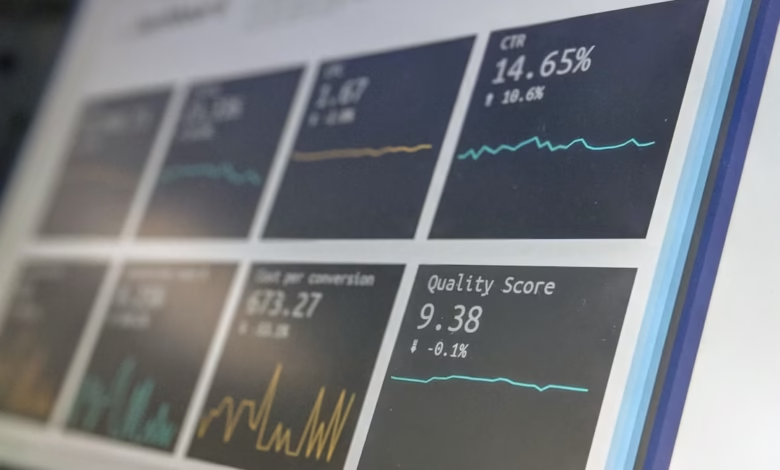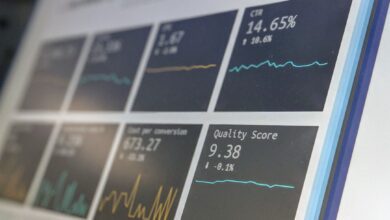Mastering Commodities Trading: Essential Strategies, Analysis Techniques, and Risk Management for Success

Commodities trading is a dynamic and exciting venture that allows investors to trade raw materials such as gold, silver, oil, and agricultural products. As the global economy evolves, the demand for these essential commodities remains strong, making this market an attractive option for traders of all levels. Whether you are engaged in stock trading, forex trading, or even exploring options trading and futures trading, understanding the nuances of commodities trading can significantly enhance your trading strategies. This article will guide you through the key concepts and strategies for success in commodities trading, delve into the critical roles of technical and fundamental analysis, and explore effective risk management strategies to navigate this complex landscape. By the end, you will have a clearer understanding of how to approach commodities trading, whether you are a day trader, swing trader, or diving into more advanced techniques like algorithmic trading or high-frequency trading. Join us as we unpack the intricacies of trading in this essential market and equip yourself with the tools necessary for successful online trading on various platforms.
- 1. Understanding Commodities Trading: Key Concepts and Strategies for Success
- 2. The Role of Technical and Fundamental Analysis in Commodities Trading
- 3. Navigating Risks in Commodities Trading: Effective Risk Management Strategies
1. Understanding Commodities Trading: Key Concepts and Strategies for Success
Commodities trading involves buying and selling raw materials such as gold, silver, oil, and agricultural products. Understanding the key concepts behind commodities trading is essential for traders seeking success in this dynamic market.
One of the foundational aspects of commodities trading is the distinction between various trading types, including futures trading and options trading. Futures trading involves contracts that obligate the buyer to purchase, and the seller to sell, a specific quantity of a commodity at a predetermined price on a specified future date. Options trading, on the other hand, provides the buyer the right, but not the obligation, to purchase or sell a commodity at a set price before a certain date. Both trading strategies allow participants to hedge against price fluctuations, but they come with unique risks and rewards.
Moreover, traders can utilize different approaches such as day trading, swing trading, and scalping to capitalize on market movements. Day trading involves making multiple trades within a single day, taking advantage of short-term price changes. Swing trading focuses on holding positions for several days or weeks to benefit from longer-term trends, while scalping aims for quick, small profits on minor price changes.
In commodities trading, risk management is crucial. Employing strategies like leverage trading and margin trading can amplify gains, but they also increase potential losses. Therefore, traders must implement strong risk management practices to protect their capital. Utilizing tools such as technical analysis and fundamental analysis can provide insights into market trends and help inform trading decisions. Technical analysis involves studying price charts and patterns, while fundamental analysis examines economic indicators and news events that can impact commodity prices.
Trading psychology plays a significant role in successful commodities trading. Emotions such as fear and greed can influence decision-making, leading to impulsive trades. Developing a disciplined trading mindset can help traders stick to their strategies, whether they are engaged in online trading platforms or utilizing algorithmic trading techniques.
For those interested in diversifying their portfolios, commodities trading can complement other forms of trading, such as forex trading, stock trading, and crypto trading. Index trading and ETF trading offer additional avenues for exposure to commodities, allowing traders to invest in a basket of commodities or commodities-related stocks.
In conclusion, understanding the key concepts and strategies in commodities trading is vital for navigating the complexities of the market. By leveraging effective trading strategies, conducting thorough market analysis, and maintaining a disciplined trading psychology, traders can enhance their chances of success in this lucrative field.
References:
– Commodity Futures Trading Commission. (2023). Understanding Futures. [Link](https://www.cftc.gov/ConsumerProtection/Resources/UnderstandingFutures/index.htm)
– Investopedia. (2023). Options Trading. [Link](https://www.investopedia.com/terms/o/option.asp)
– Trading Psychology. (2023). The Importance of Trading Psychology. [Link](https://www.tradingsim.com/blog/trading-psychology/)
2. The Role of Technical and Fundamental Analysis in Commodities Trading
In the realm of commodities trading, both technical and fundamental analysis play crucial roles in guiding traders' decisions and strategies. Understanding these two approaches can significantly enhance trading outcomes, whether you are involved in futures trading, options trading, or even day trading.
Technical analysis focuses on historical price movements and trading volumes to predict future price trends. Traders often rely on charts and technical indicators to identify patterns that can suggest potential market movements. For instance, commodities traders might use moving averages, relative strength index (RSI), and candlestick patterns to make informed decisions. This form of analysis is especially popular among those engaged in high-frequency trading, scalping, and swing trading, where timely entries and exits can lead to substantial profits.
On the other hand, fundamental analysis delves into the underlying factors that affect commodity prices, such as supply and demand dynamics, economic indicators, and geopolitical events. For instance, a trader in energy trading might analyze oil production levels, inventory reports, and OPEC announcements to gauge the market direction. This type of analysis is essential for developing a comprehensive trading strategy, particularly in derivatives trading and margin trading, where the impact of external factors can lead to significant price fluctuations.
Both technical and fundamental analyses contribute to a trader's overall market analysis. By combining these approaches, traders can better manage risk and develop robust trading strategies. For example, a trader might identify a bullish trend in gold prices through technical analysis while simultaneously considering economic reports indicating increased jewelry demand, which could further validate their position.
Moreover, trading psychology also plays a vital role in the effectiveness of both analyses. A trader's emotional response to market movements can influence their decision-making process, whether they are engaged in copy trading or algorithmic trading. Understanding how to balance the insights gained from technical and fundamental analysis with personal trading psychology can lead to more disciplined and successful trading outcomes.
In conclusion, mastering both technical and fundamental analysis is essential for anyone involved in commodities trading. By leveraging these analytical tools, traders can enhance their market understanding, refine their trading strategies, and ultimately improve their trading performance across various online trading platforms.
3. Navigating Risks in Commodities Trading: Effective Risk Management Strategies
In commodities trading, navigating risks effectively is crucial for success. The market is influenced by a multitude of factors, including geopolitical events, economic indicators, and supply-demand dynamics. Here are some effective risk management strategies that every trader should consider:
1. **Diversification:** One of the fundamental principles of risk management is diversification. By spreading investments across different commodities—such as gold, silver, oil, and agricultural products—traders can mitigate the impact of adverse price movements in any single commodity. This strategy is similar to stock trading, where diversification can reduce portfolio risk.
2. **Use of Stop-Loss Orders:** Implementing stop-loss orders is an essential tactic in commodities trading. This allows traders to set a predetermined price at which their position will automatically close to prevent further losses. By doing so, traders can protect their capital, whether they're engaged in day trading, swing trading, or longer-term strategies like futures trading.
3. **Leverage and Margin Management:** While leverage trading can amplify returns, it also increases risk. Traders must use leverage judiciously and ensure that their margin trading accounts are well-managed. High-frequency trading and algorithmic trading strategies often utilize leverage to maximize profits, but they also require careful attention to risk exposure.
4. **Technical and Fundamental Analysis:** Employing both technical analysis and fundamental analysis is vital for making informed trading decisions. Technical analysis helps traders identify price trends and patterns, while fundamental analysis provides insights into the economic factors affecting commodities. This combined approach enhances market analysis and can lead to more effective trading strategies.
5. **Trading Psychology:** Understanding trading psychology is crucial in managing risk. Traders often face emotional challenges that can cloud their judgment. By developing a disciplined trading mindset, traders can stick to their strategies and avoid impulsive decisions that may lead to significant losses.
6. **Monitoring Market Conditions:** Staying informed about market conditions is essential for effective risk management in commodities trading. Factors such as weather patterns, geopolitical tensions, and changes in demand can significantly affect commodity prices. Regularly reviewing news and market updates can help traders adjust their strategies accordingly.
By implementing these risk management strategies, traders can enhance their ability to navigate the complexities of commodities trading. Whether engaging in options trading, CFD trading, or any other form of trading, a solid risk management framework will help traders protect their investments and optimize their trading outcomes.
In conclusion, understanding the risks associated with commodities trading and actively employing risk management techniques can lead to more successful trading ventures, whether through online trading platforms or traditional brokerage accounts.
References:
– Hull, J. C. (2015). Options, Futures, and Other Derivatives. Pearson.
– Black, F., & Scholes, M. (1973). The Pricing of Options and Corporate Liabilities. Journal of Political Economy, 81(3), 637-654.
– Geman, H. (2005). Commodities and Commodity Derivatives: Modeling and Pricing for Agriculturals, Metals and Energy. Wiley.
In conclusion, commodities trading offers a dynamic and potentially lucrative avenue for investors, whether they are seasoned traders or newcomers exploring the vast world of online trading platforms. By understanding key concepts and strategies, including the importance of both technical and fundamental analysis, traders can position themselves for success in this competitive market.
Moreover, navigating the inherent risks associated with commodities trading is crucial. Employing effective risk management strategies, such as leverage trading and margin trading, can help traders protect their investments while maximizing potential returns. Whether you're engaged in day trading, swing trading, or exploring options like futures trading and CFDs, staying informed about market trends and maintaining a disciplined trading psychology are essential components of a successful trading journey.
As you venture into commodities trading, remember to continually refine your trading strategies and adapt to market changes, whether through high-frequency trading, algorithmic trading, or copy trading. By remaining vigilant and informed, you can harness the opportunities presented by this vibrant market, whether you're focused on energy trading, agricultural products, or precious metals. With the right tools and knowledge, you can navigate the complexities of commodities trading and achieve your financial goals.
References:
(Include relevant sources and citations here)





